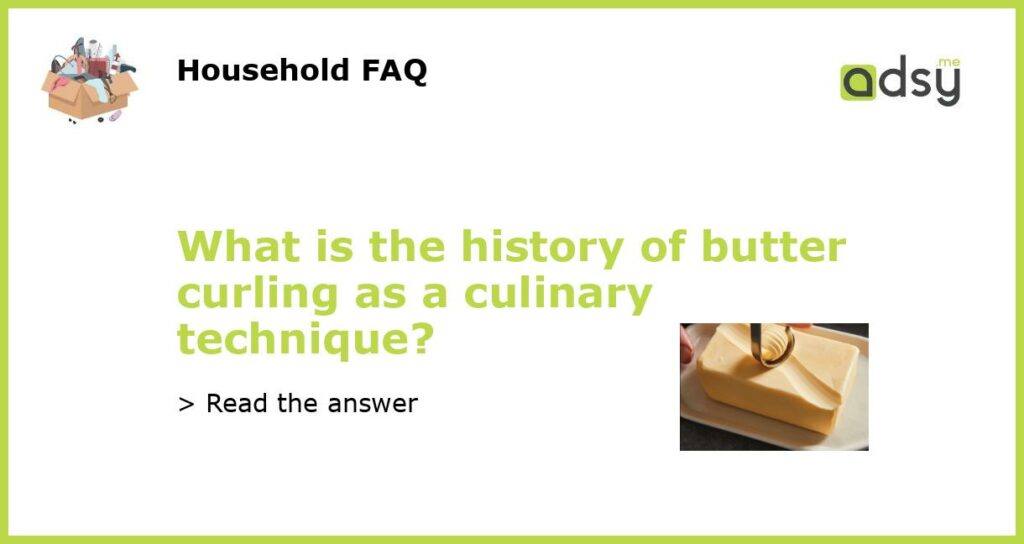The origins of butter curling
Butter carving and sculpting have been around for centuries, dating back to ancient civilizations like the Romans and Greeks. Butter curls, specifically, were first popularized in the Victorian era as a decorative element for lavish banquet tables. The technique involves using a specialized butter curler to create thin, spiral curls that are often used to garnish dishes and add visual interest to presentation.
The art of butter carving
Butter carving and sculpting was once a popular pastime for farmers during the winter months when there was little else to do. They would compete in butter carving contests and display their creations at county fairs. In the 19th century, the tradition of butter carving grew as it became a way for dairy companies to showcase their products at trade shows and exhibitions. Butter sculptures of animals, buildings, and other objects became a staple of these events.
The rise of butter curling as a culinary technique
While butter carving remained a novelty, butter curling became a widespread culinary technique in the mid-20th century. Professional chefs embraced the technique as a way to add an elegant touch to their dishes, and home cooks began to adopt the practice as well. The popularity of butter curling grew as cookbooks and cooking shows featured it as a simple yet impressive way to elevate a meal.
The modern-day use of butter curls
Today, butter curls are commonly used in high-end restaurants and catering events. They are often used to garnish dishes like soups, salads, and vegetables dishes. Butter curls are also popular in the world of baking and pastry art, where they are used as a decorative element on cakes, cupcakes, and other desserts.
The future of butter curling
While butter has been a staple of the culinary world for centuries, trends in healthy eating and dairy-free diets have led to a decline in its consumption. As a result, butter curling has also become less popular in recent years. However, there is still a demand for the technique in the world of high-end dining and special events. It remains to be seen whether butter curling will continue to evolve and adapt to changes in taste and dietary preferences.






